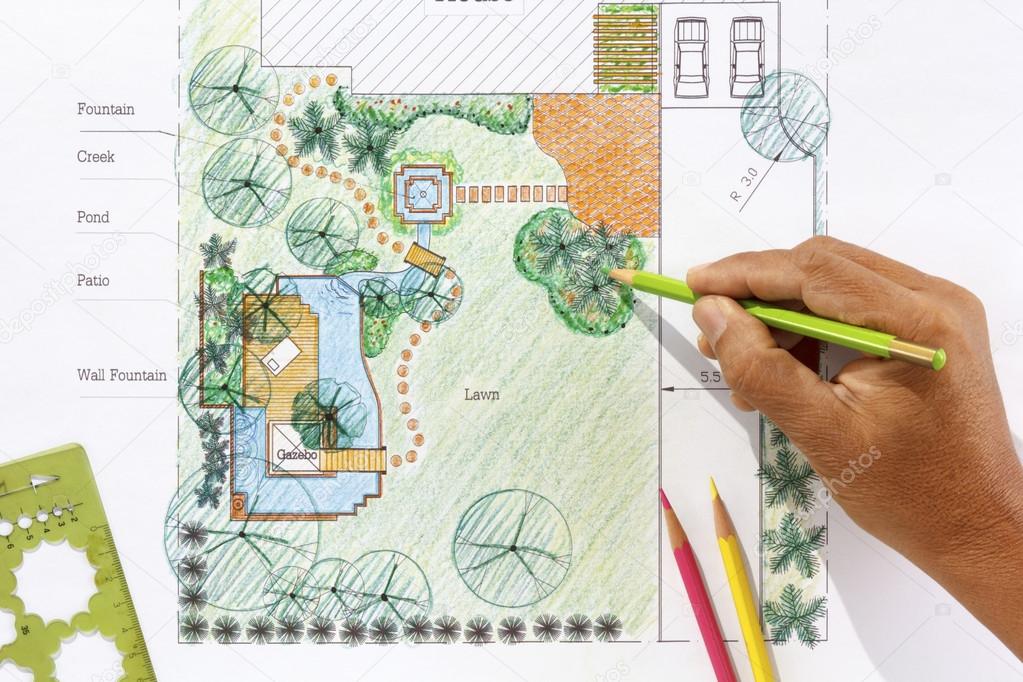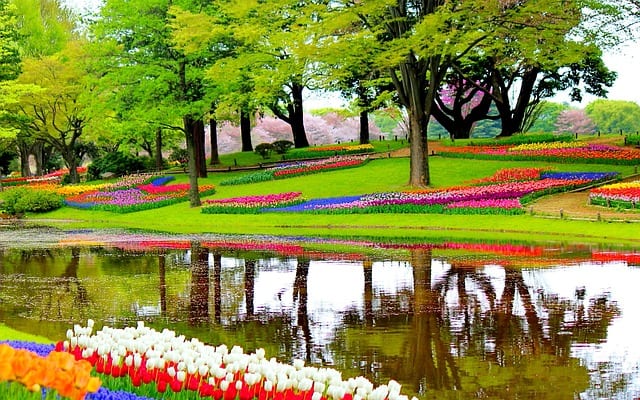
Processes are designed, practiced, and perfected to predictably produce desired results.
When a patient visits the doctor a questionnaire is completed to collect important historical data such as allergies, surgeries, and family history. The form also asks for insurance information and who is ultimately responsible for settling the account.
Then a nurse checks a few metrics to such as pulse, height and weight, and blood pressure that inform the general health of vital organs.
This standard procedure exists to make an accurate diagnosis. Only then can the doctor have a conversation about the possible options, next steps, and expectations for a complete recovery.
There isn’t a standard process for a landscape design consultation. One reason for this is that anybody can hold themselves out as a landscape designer.
#1. Communication Phase: It’s a Relationship Process
Most landscape designers have horticulture or related degrees and experience.
If the designer uses the title Landscape Architect, he or she must by law be either registered or licensed in that particular state where they work, depending on the requirements for that state. There are also earned industry certifications that will provide further validation of their expertise and experience.
Clients will work with a landscape designer for months and sometimes years to complete a project. This makes the initial communication phase of the process one that should not be underestimated.
One can get a good take on what it’s like to work with a landscape design professional by asking good questions to get comfortable with the relationship. This will invariably start with credentials and experience before moving to the more subtle personality and style qualities.
Once those boxes are checked and everyone is comfortable, it’s time to understand their process and expectations of you, as well as your expectations of them. Some questions to ask will include:
- How is the construction budget determined?
- How is the design fee determined?
- How do you know you will happy with the result?
- What happens if you aren’t happy?
- Do you own the drawings if you decide to build the project with another company?
You will discover this is a major investment of your time. In fact, process-oriented designers will be prepared to give you a timeline that holds everyone accountable for getting each phase completed in a timely way.
This first communication phase ultimately leads to a discussion about design fees, and test for moving forward with the relationship.
Some designers charge a flat fee that may range from a few hundred dollars to well into the thousands. Others work off of a retainer on an hourly basis. Others use a hybrid approach based on a percentage of the value of the expected built project, such as from 5-15% of the project.
While it is rare nowadays, there may still be designers that do not charge a fee with the expectation that you will build the project with them. Of course, they will hold ownership of those drawings until the project is completed.
All or a portion of design fees may be backed out of the cost of the project or considered to be a part of it. Thus, in reality, a design fee is always paid, whether it is broken out or built into the cost of the project.
Most important is understanding how their process works, and the respective responsibilities on each side to reach a successful outcome.
#2. Collaboration Phase: Contribute To Your Design
In this phase, the designer will be exploring the use of space and its relationship with surrounding spaces. This will include the following and more.
- Screening objectional views
- Framing desirable views
- Understanding the circulation throughout the site
- Allocating space for activities and structures
- Optimizing for nighttime activities
- Providing for water flowing into, within, and off the site
It’s easy to sit back and let the designer do their job. However, the greater your involvement with the process the more likely you will love the result. After all, you will be living with it and nobody knows you better than you do.
Every company will probe your expectations, but the more experienced companies will know that they know more than you do. They will educate you about what’s possible without judging if you will like it or not.
The idea is to exhaust possibilities, step by step.
You have to be prepared to work. The most common regret clients have is discovering a solution down the road that had not been considered. Fortunately, you have the internet to conduct research.
You must be proactive about your expectations. One of the best questions you could ask is why.
- Why are you recommending this wall?
- Why can’t we build the wall with natural stone?
- Why can’t we do it this way?
Don’t be afraid to challenge the designer. Most designers will welcome your input because what’s inside of your head and heart will help them make you happy.
#3. Creativity Phase: Examine and Discuss Preliminary Drawings

As you move through the design process you should be discussing budgets, starting at the beginning. If you wait until the creativity phase you may be surprised. That sometimes happens and it’s unfortunate because then the designer must somehow break the design to fit a limited budget.
Clients often ask, “How can I give you a budget if we don’t know the design yet?” They are also afraid that if they give the designer a generous budget he or she will be sure to use it all.
The best way to work to a budget is by thinking in terms of budget ranges and expected elements. If you and the designer agree on the elements you want, such as a pool, driveway, plantings, and so on, then the budget can be managed by working with the size or quality of each element.
As you review the results of the creative process, be sure to address the following considerations.
- Ongoing maintenance
- Safety for children and pets
- Conformance with community regulations
You can help by being proactive. The more your designer knows from the beginning the better.
#4. Commitment Phase: Clarify Timelines, Conditions, and Communication
Now that the design is complete, and you have signed off on it, the excitement to making it reality starts to build. This is a time to once again be clear about your expectations and understand what is expected of you.
Almost no landscape project proceeds from start to finish without incident. So to keep the relationship smooth, be sure everyone is clear about responsibilities such as the following.
- Project completion phases and payment timelines
- Expected communication channels and response times
- Project management points of contact (on both sides)
- How changes will be handled, including costs, if any
- Permitting and compliance with regulations
If a project is built and it fails the responsibility falls primarily on the designer. He or she is required to specify how everything should be built to ensure the safety and integrity of the project. This should be detailed in the architectural landscape drawings.
The investment in the built project is far greater than that for the design, so you want to get insurances from the company building the project too.
If you are working with a design-build company, the burden falls 100% on the company because they have both design and build control. One of the reasons many clients choose to work with landscape design-build companies is that they have this complete control.
Obstacles and opportunities invariably arise during the construction of the project. If there is not an intimate relationship between the design and the construction company opportunities can be missed.
Oftentimes opportunities initially appear as problems in disguise. That discovery only happens if there is fluid communication between the designer, builder, and client.
